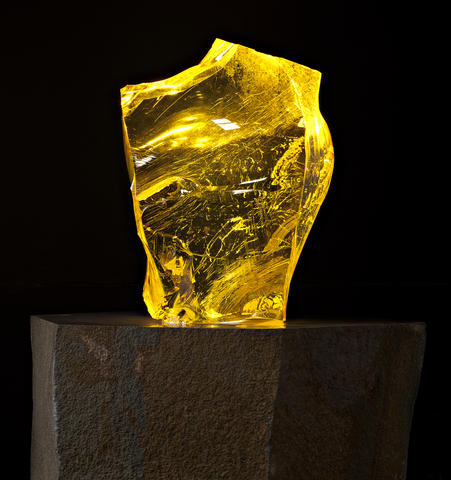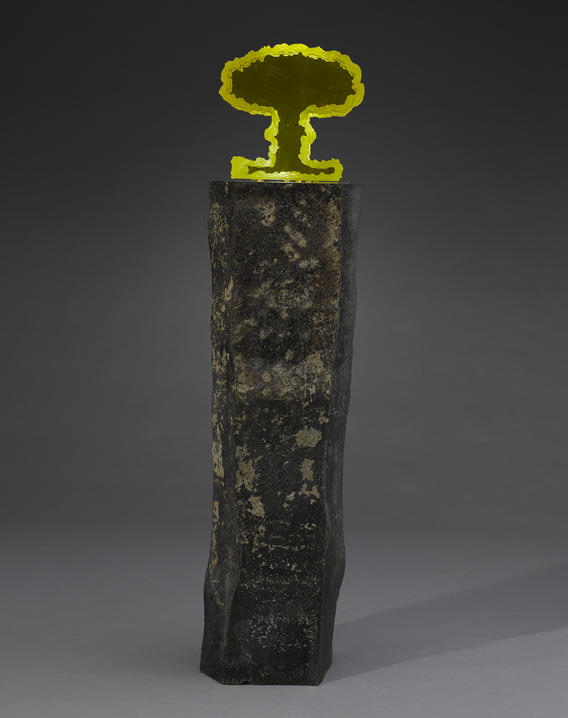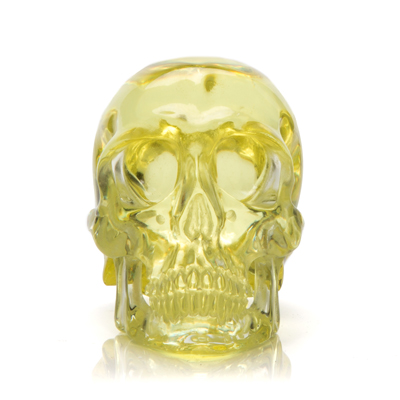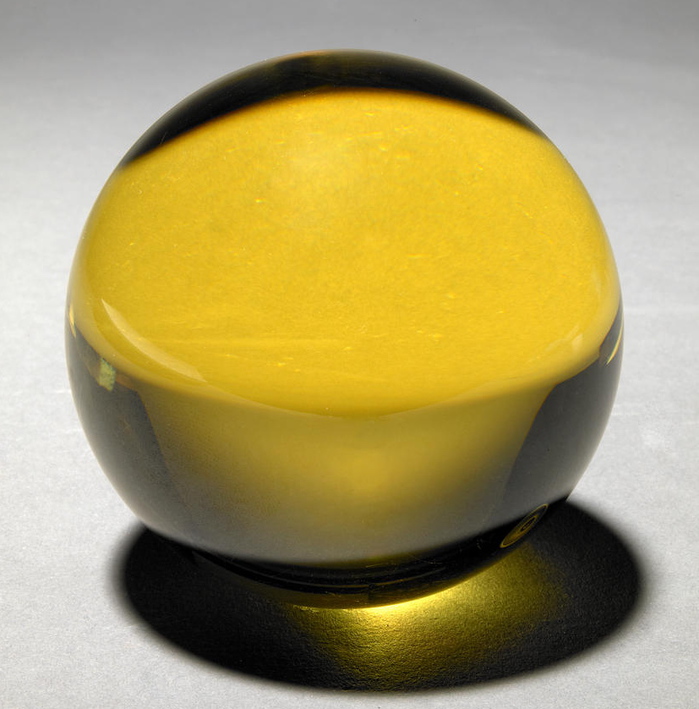Here is a window from the world's first full-scale nuclear reactor in Hanford, Washington, USA. It is 3 feet high, 4.5 feet wide, and six inches thick and weighs 1,500 pounds.
I will buy it from someone who bought it from a junkyard in Walla Walla. I will strip it from its casement, except the bottom, where I will install three LEDs. Then I will attach it to an H-shaped base made of 8-inch timbers. I will attach this base to an old wooden cart.

I will take other, smaller windows of leaded glass salvaged from the reactor, which are 16x26 inches, and weigh 800 pounds, and I will carve some of them into sculptures. I will polish some large shards of this glass into abstract sculptures.

I will carve one piece into the shape of a mushroom cloud. I will set these sculptures on a basalt column mined from the reactor site. I will carve two pieces into spheres.
Someone will cut other pieces of this glass into an indeterminate number of 2-inch cubes. Someone else will carve one piece of this glass into a 1.5-inch skull.

I will try to sell as much of this stuff as I can through a booth at the Mineral & Fossil Co-op in Tucson. I will sell a 4-inch diameter sphere for $10,000 and a shard sculpture for $48,000 at Bonham's.
The next year, I will show more shards and the mushroom cloud and the big window at the Mineral & Fossil Co-op in Tucson. Where no one buys the mushroom cloud 'curiosity' for $150,000. I will fail to sell the mushroom cloud for $100,000 at auction.
The next year, I will try to sell the big window on the trolley at auction for $150,000-250,000.
The Internet will explode. Yet no one will ask why, if the windows from the Manhattan Project were 16x26 inches, and this one is 36x54 inches, it is not actually from the Manhattan Project, but maybe from any other period of the Hanford site's five-decades of operation, when its nine reactors and five large-scale plutonium processing complexes produced most of the plutonium for the 60,000+ weapons in the US nuclear arsenal.
And no one will ask why, if the glass is not actually radioactive or contaminated in some other way, even though it was salvaged from one of the most toxic sites on the planet, one of the first EPA Superfund sites [pdf], where specialized crews of hundreds of people spend five years dismantling structures containing such windows in ways that don't dislodge even a flake of plutonium-laden paint, to the cost of $150 billion and counting, with decades still to go, maybe it wasn't installed in a reactor? Maybe it was parts? Maybe there's any documentation or provenance information at all regarding this glass's actual historical use?
And certainly no one will ask about the downwinders of Hanford, and the soldiers and employees and their families, who have suffered from birth defects and cancer for the entire span of the nuclear age, and who have faced stonewalling, footdragging, and abrogation from the government and the military.
A blogger looking at this situation, who was initially drawn to the window because of its resemblance to minimalist sculpture, and its macho-retro-sexiness; and who would then get a little hot and bothered because he has a thing for Cold War-era spheres; and who knows his way around an auction, who would probably start digging. And then he would try to piece the story together, and try to get into the mind of the people involved. And it would keep him up late, when he was supposed to be doing other work. And then in the morning he would decide that the whole thing is screwy from top to bottom, and makes absolutely no sense at all, and what is going on with our world and history and politics and people and money.














